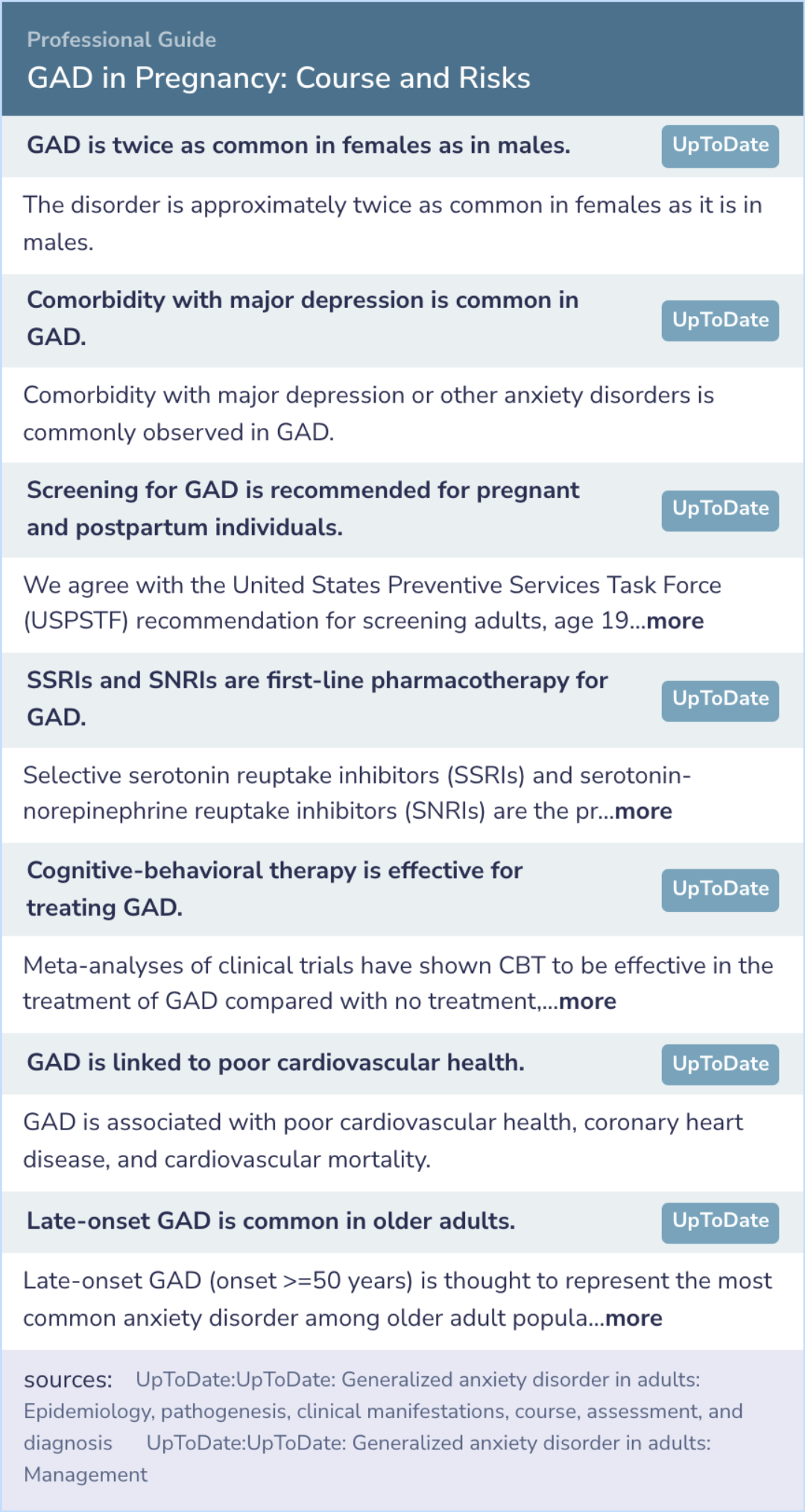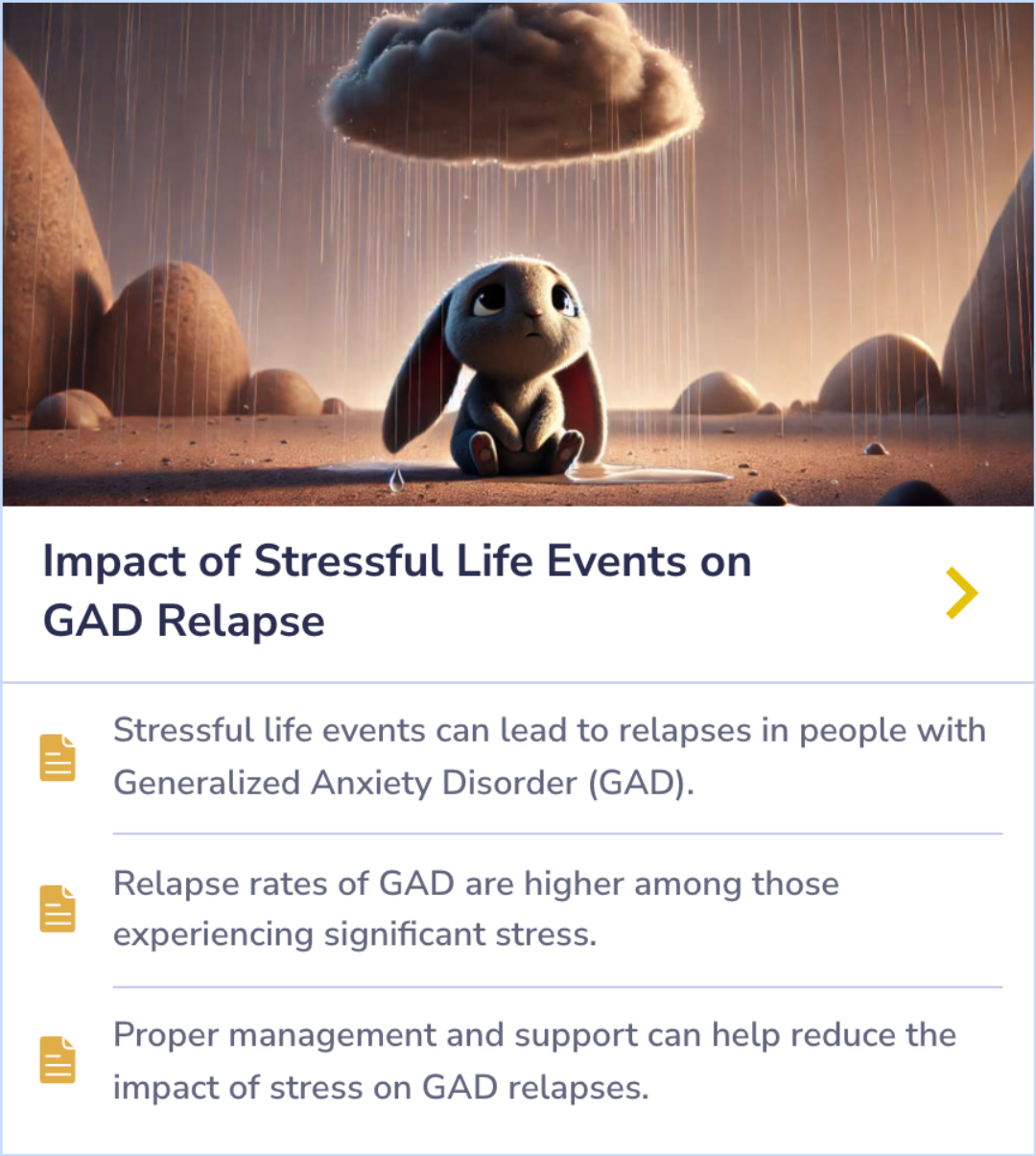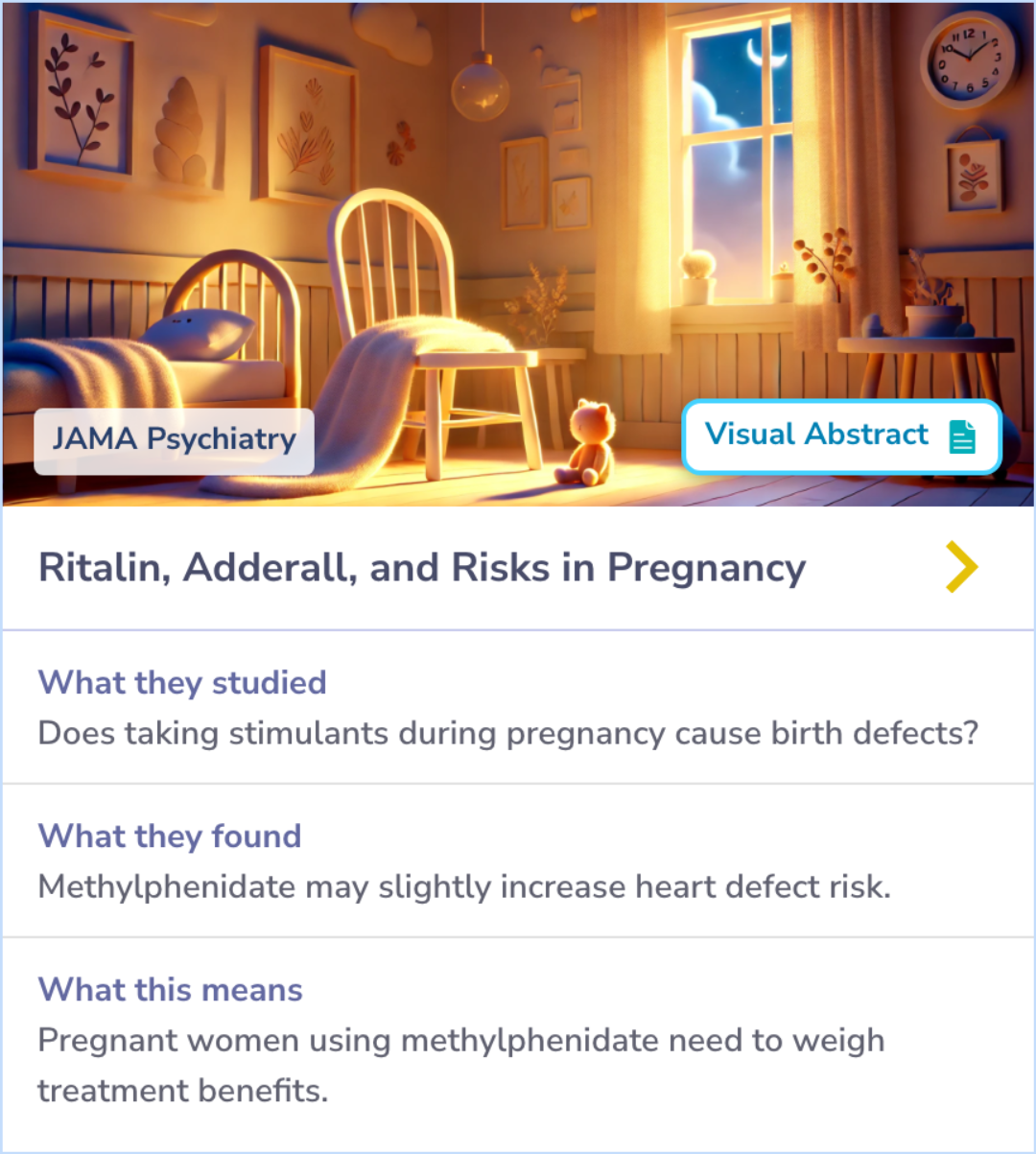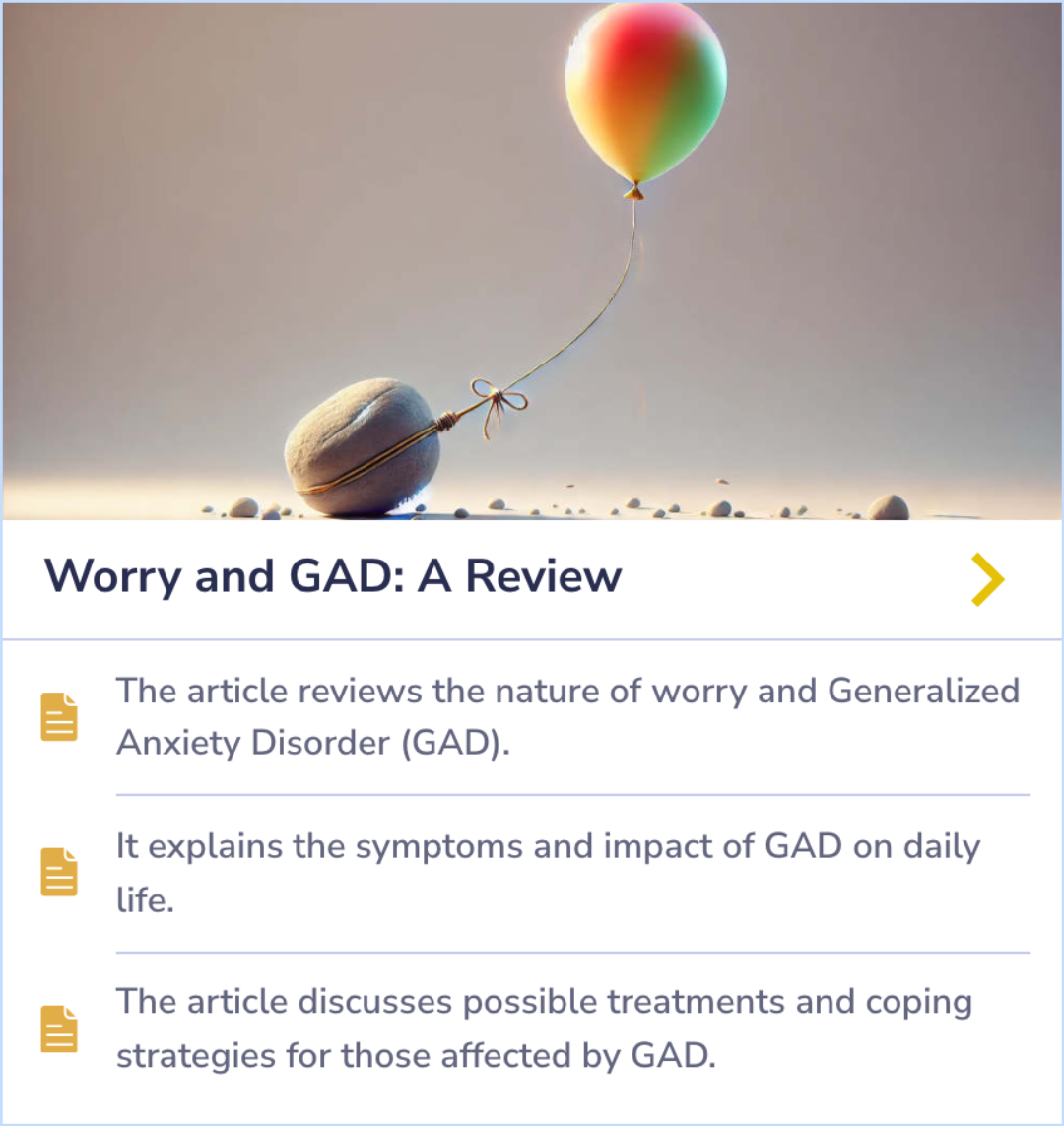Generalized Anxiety Disorder Papers
Visual Abstract
Generalized anxiety disorder: course and risk factors in pregnancy
GAD in Pregnancy: Course and Risks
November 25, 2024
author
Buist A, Gotman N, Yonkers KA
journal
J Affect Disord.
Date Published
2011 Jun
Why link to a visual abstract?
What is a visual abstract?
Original
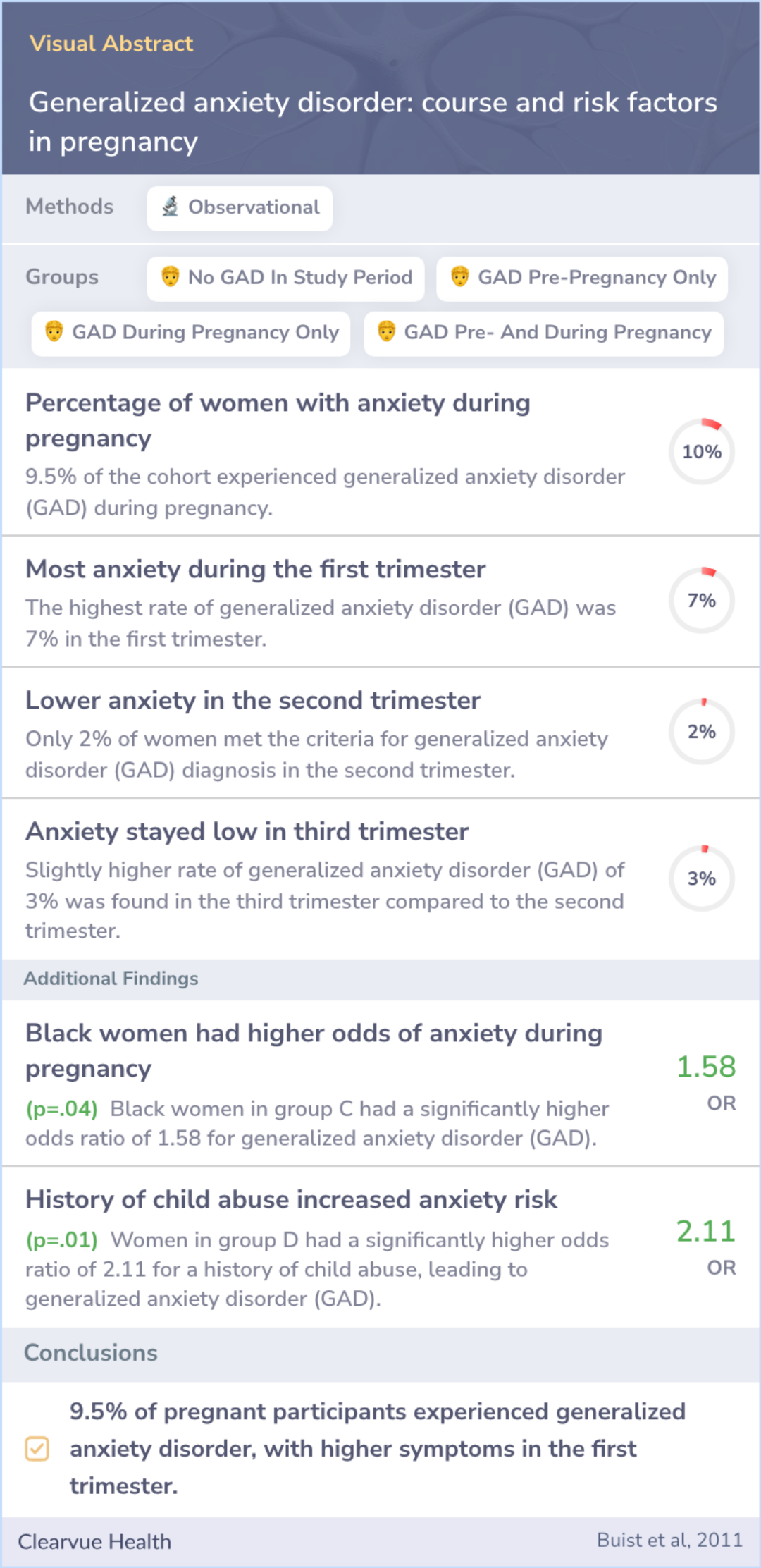
Study Summary
🔬
What They Studied
The researchers investigated the occurrence and risk factors for generalized anxiety disorder (GAD) during pregnancy.
💡
What They Found
They found that 9.5% of the study participants experienced GAD during pregnancy, with symptoms peaking in the first trimester and decreasing over time, influenced by past GAD episodes, education, social support, and history of child abuse.
📚
What This Means
Current evidence suggests that anxiety symptoms without obvious causes, such as those seen in GAD during pregnancy, should be closely monitored. This study aligns by emphasizing the importance of identifying anxiety in pregnant individuals for timely intervention.
Study Summary
Study Overview
The study aimed to explore anxiety disorders during pregnancy, recognizing that identifying anxious patients can lead to necessary psychiatric care. While previous research often overlooks the significance of such disorders in this time, the study highlighted how symptoms can vary during different pregnancy stages. Understanding these dynamics can offer insights into the mental health of expecting mothers and their children, and it underscores the need for greater awareness of this issue.
The study noted that anxiety disorders in pregnancy are linked with postnatal challenges. It shed light on how prevalent anxiety can affect child outcomes, showing a clearer picture of the mental health landscape for pregnant women and the importance of addressing their needs.
The study noted that anxiety disorders in pregnancy are linked with postnatal challenges. It shed light on how prevalent anxiety can affect child outcomes, showing a clearer picture of the mental health landscape for pregnant women and the importance of addressing their needs.
Abstract: background
There are limited studies of generalized anxiety disorder (GAD) across pregnancy.

Opportunity for Treatment
"Identification of anxious patients during pregnancy may provide an opportunity to engage those in need of psychiatric treatment."
Gaps in Research
"Few studies have focused on anxiety disorders in the perinatal period."
Impact on Child Outcomes
"Importantly, anxiety disorders in pregnancy are associated with postnatal depressive symptoms and adverse child outcomes."
Study Summary
Methods
A total of 2,793 women participated in the Yale Pink and Blue study. This group was selected based on having experienced major depressive disorder (MDD) in the past five years or having used antidepressants within the past year. Participants were interviewed three times: two during pregnancy and one after delivery.
GAD episodes were defined according to DSM IV criteria but required a duration of one month or longer. The study examined GAD in four groups based on whether women had GAD before pregnancy, during pregnancy, or both periods.
GAD episodes were defined according to DSM IV criteria but required a duration of one month or longer. The study examined GAD in four groups based on whether women had GAD before pregnancy, during pregnancy, or both periods.
Abstract: methods
Women (n=2793) were enrolled in the Yale Pink and Blue study, a cohort enriched with subjects who suffered from major depressive disorder (MDD) within the past five years or used antidepressants in the past year. Subjects were evaluated with the Comp...more

Study Summary
Results
The study found that 9.5% of women experienced GAD at some point during their pregnancy. Anxiety symptoms were most intense during the first trimester and decreased as pregnancy progressed.
Further analysis showed that factors such as past GAD episodes, education level, social support, and a history of child abuse played a role in determining which women experienced GAD at different stages of pregnancy. These findings highlight the importance of monitoring anxiety throughout pregnancy.
Further analysis showed that factors such as past GAD episodes, education level, social support, and a history of child abuse played a role in determining which women experienced GAD at different stages of pregnancy. These findings highlight the importance of monitoring anxiety throughout pregnancy.
Abstract: results
9.5% of the cohort suffered from GAD at some point in pregnancy. Anxiety symptoms were highest in the first trimester and decreased across pregnancy. Regression analysis revealed that previous GAD episodes, education, social support and a history of ...more
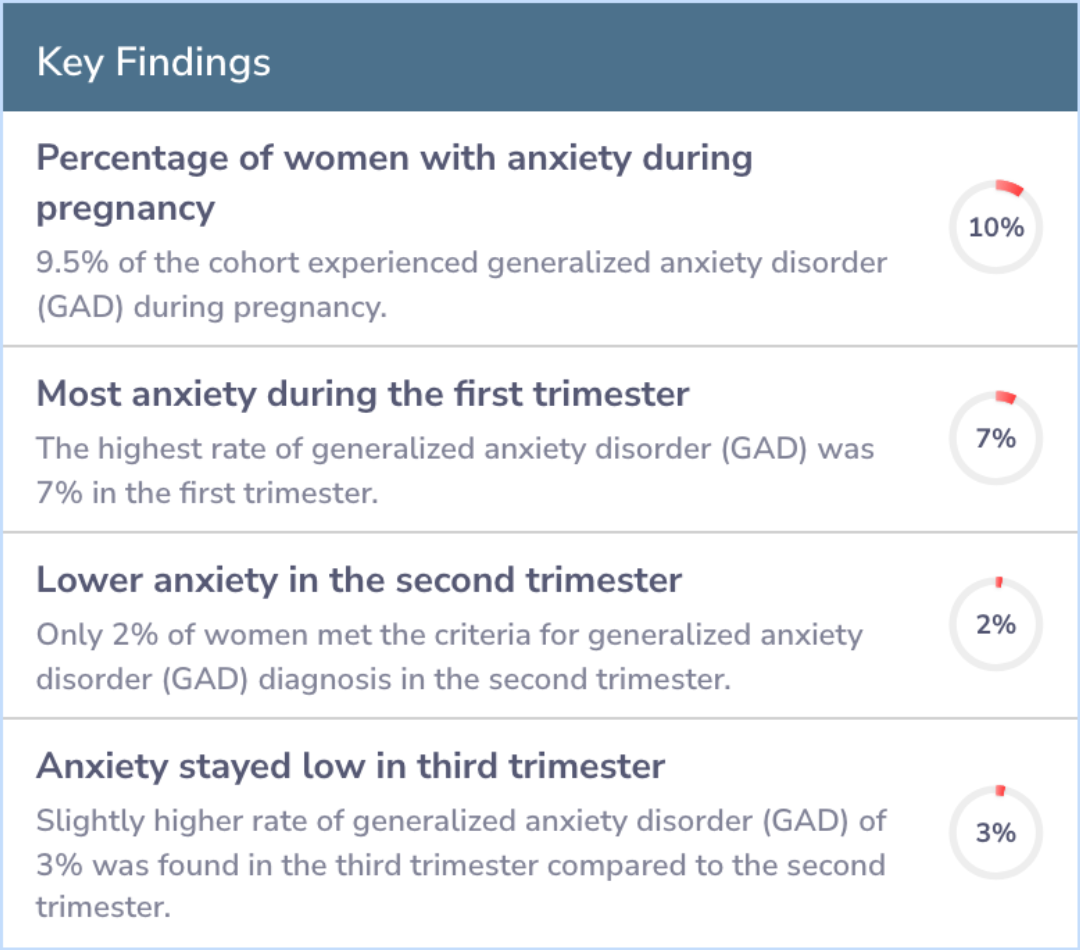
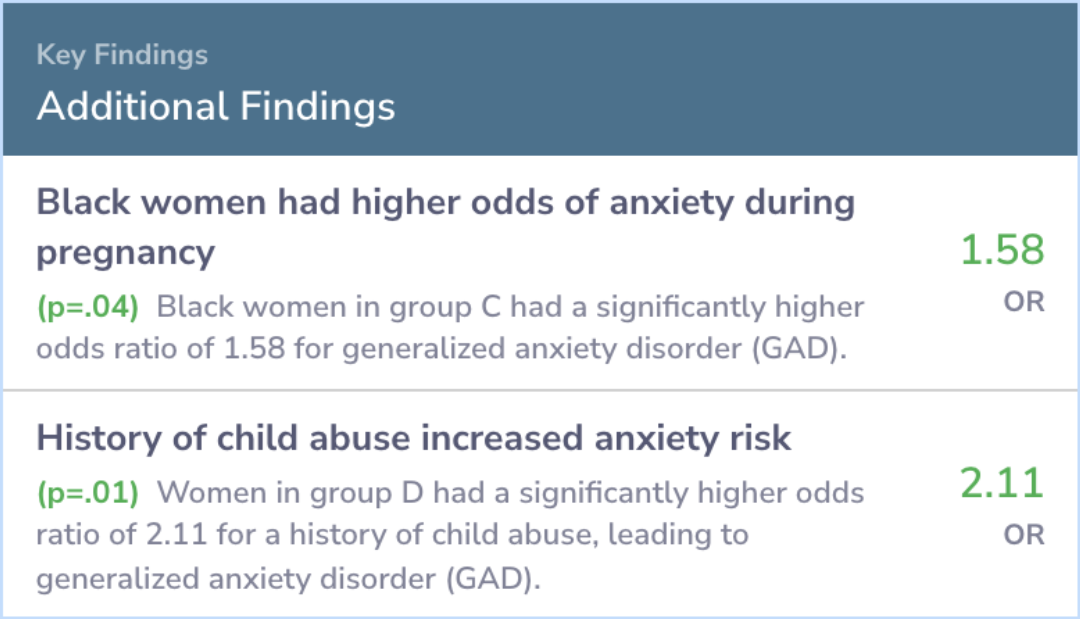
Study Summary
Conclusions
This sample may not be fully representative of the general population, as it included women already at higher risk of mental health issues. Additionally, there was low representation of socio-economically disadvantaged women in the study.
Identifying anxiety in pregnant women presents an opportunity to provide necessary psychiatric care. Early detection and support could improve outcomes for both mothers and their babies by addressing mental health needs during this crucial period.
Identifying anxiety in pregnant women presents an opportunity to provide necessary psychiatric care. Early detection and support could improve outcomes for both mothers and their babies by addressing mental health needs during this crucial period.
Abstract: conclusions
The sample may not be representational, as it was enhanced with those at risk, and had relatively low representation of socio-economically disadvantaged women. Identification of anxious patients during pregnancy may provide an opportunity to engage t...more
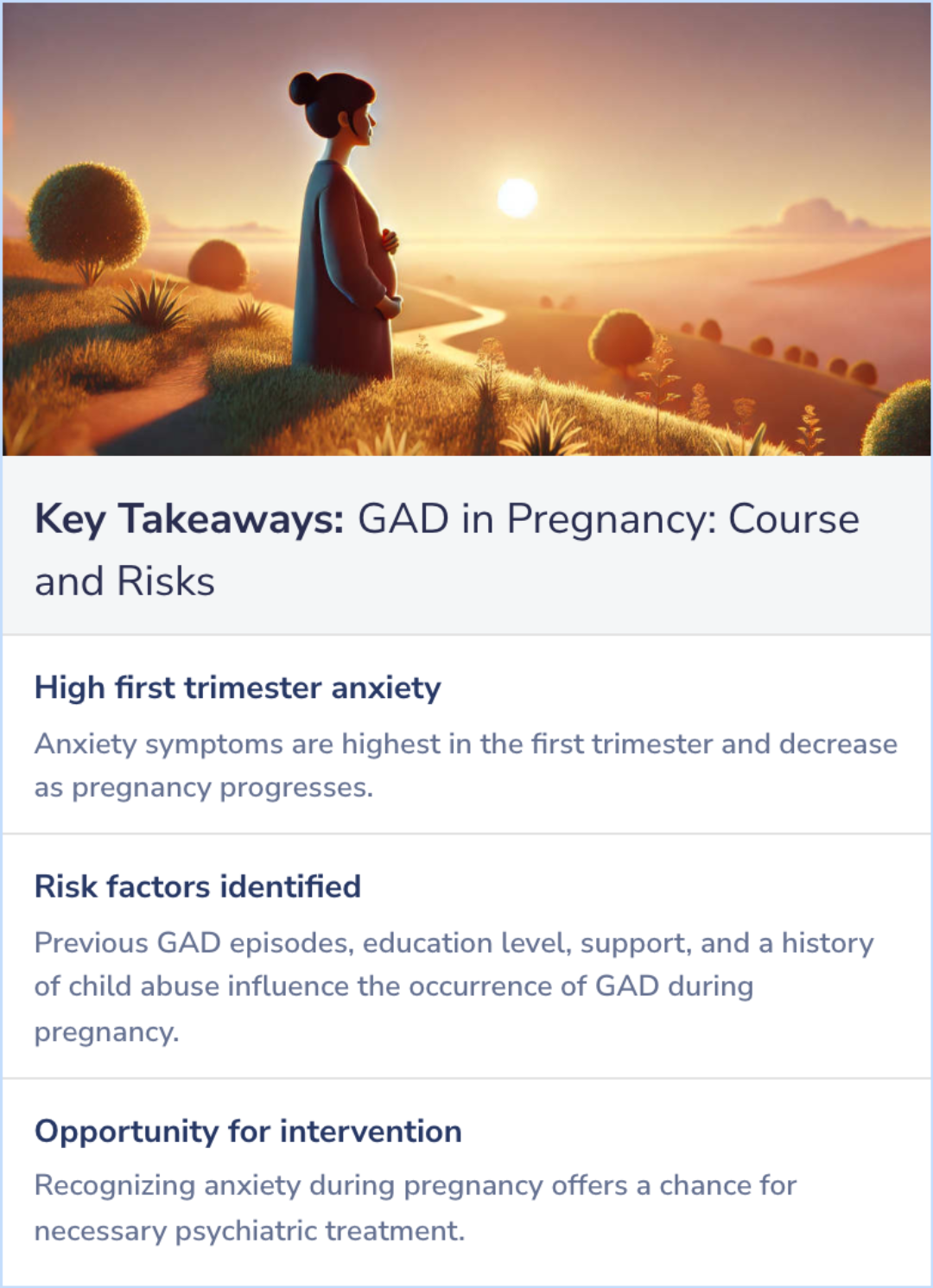
Background Information
Patient Guide
😟
Impact of GAD in Daily Life
Excessive worry in GAD affects daily functionality, managed with CBT and medications.
🧠
Biological Roots of GAD
Genetics and neurotransmitter imbalances, like serotonin, may underlie GAD risk.
🌍
Environmental Risk Factors
Stressful environments and trauma heighten GAD risk, relevant in pregnancy contexts.
🔄
Chronic Nature of GAD
GAD's long-term and relapse potential complicates management during pregnancy.
🤝
Importance of Social Support
Support groups and open communication aid in GAD management, especially in stressors like pregnancy.
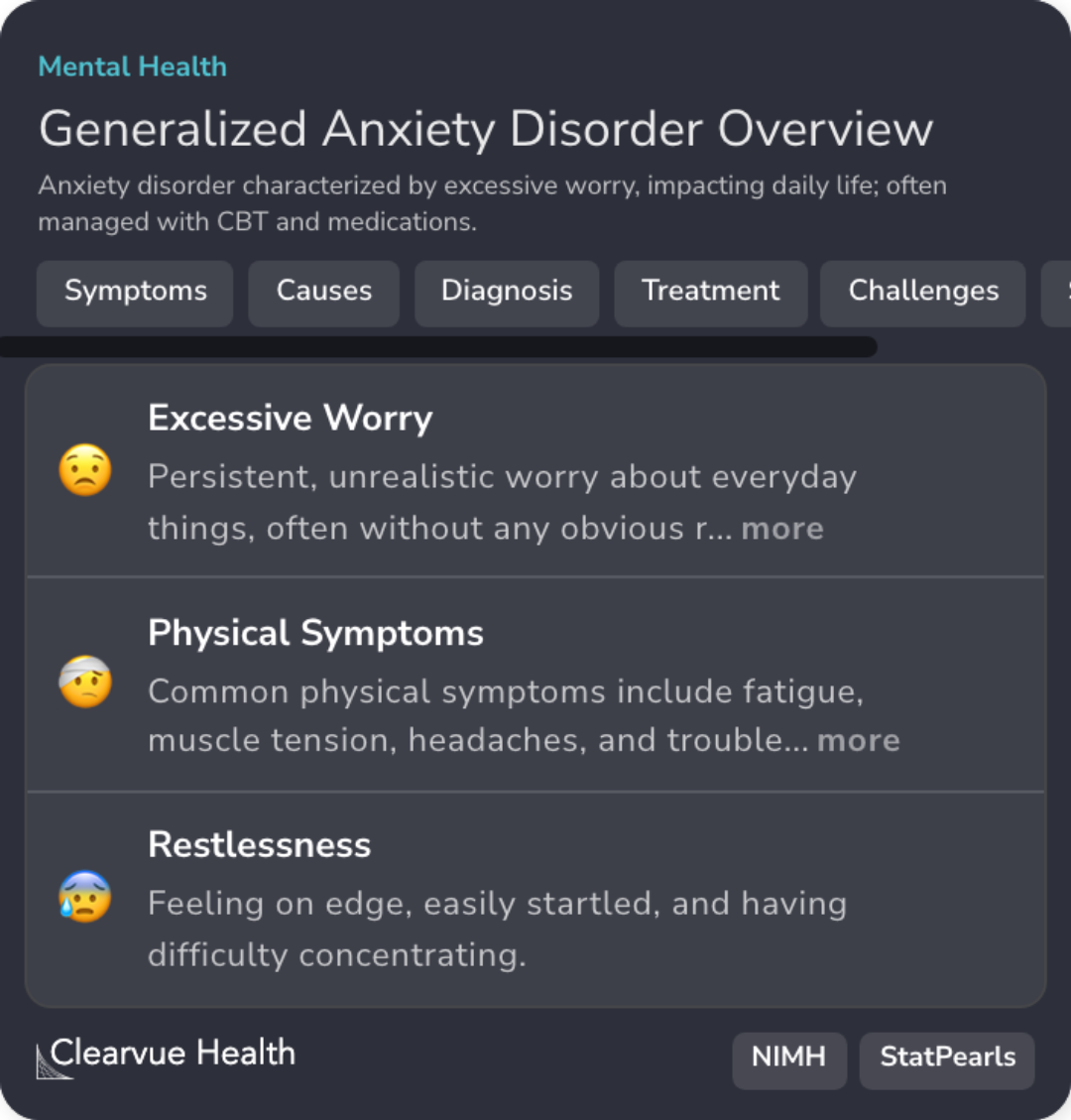
Professional Guide
Expert Opinion: GAD in Pregnancy: Course and Risks
In line with the identification of anxious patients during pregnancy, current guidelines highlight that GAD is approximately twice as common in females as in males.
Comorbidity with major depression is frequently observed in GAD, consistent with findings in this cohort.
Experts recommend screening for anxiety disorders in pregnant and postpartum individuals, aligning with the need to acknowledge and address anxiety symptoms early.
SSRIs and SNRIs are preferred first-line treatments, and cognitive-behavioral therapy (CBT) has proven effective in clinical trials for managing GAD.
Comorbidity with major depression is frequently observed in GAD, consistent with findings in this cohort.
Experts recommend screening for anxiety disorders in pregnant and postpartum individuals, aligning with the need to acknowledge and address anxiety symptoms early.
SSRIs and SNRIs are preferred first-line treatments, and cognitive-behavioral therapy (CBT) has proven effective in clinical trials for managing GAD.
Evidence Summary
Managing Stress Reduces GAD Relapses
Stress can reignite symptoms of Generalized Anxiety Disorder, particularly in those who face significant life challenges. Individuals under more stress have higher chances of experiencing these relapses.
Effective management and solid support systems can mitigate how much stress impacts GAD symptoms, highlighting the importance of reducing external pressures when possible.
Effective management and solid support systems can mitigate how much stress impacts GAD symptoms, highlighting the importance of reducing external pressures when possible.
Evidence Summary
Slight Heart Defect Risk Linked to Methylphenidate in Pregnancy
Stimulant medications, such as methylphenidate and amphetamines, are often prescribed to women of reproductive age, but their safety during pregnancy is under review. The study examines whether using these stimulants during early pregnancy increases the risk of congenital malformations. In particular, it highlights a slightly increased risk of cardiac malformations with methylphenidate, but not with amphetamines.
This finding is based on data from over 1.8 million U.S. pregnancies and 2.5 million pregnancies in Nordic countries.
This finding is based on data from over 1.8 million U.S. pregnancies and 2.5 million pregnancies in Nordic countries.
Evidence Summary
Symptoms and Treatment of Generalized Anxiety Disorder
The content breaks down the key aspects of Generalized Anxiety Disorder (GAD), highlighting its symptoms and the impact it has on daily life. It explores how persistent worry affects people with GAD and explains how it can interfere with day-to-day functioning.
It also presents treatment options, focusing on methods that help manage GAD, such as therapy and coping strategies tailored to individuals’ needs.
It also presents treatment options, focusing on methods that help manage GAD, such as therapy and coping strategies tailored to individuals’ needs.
